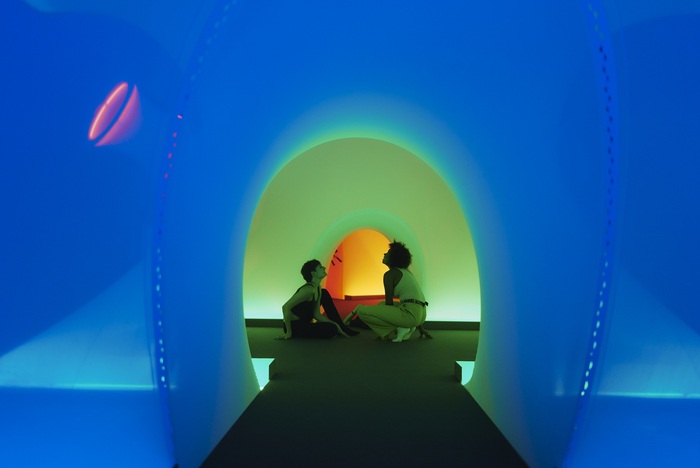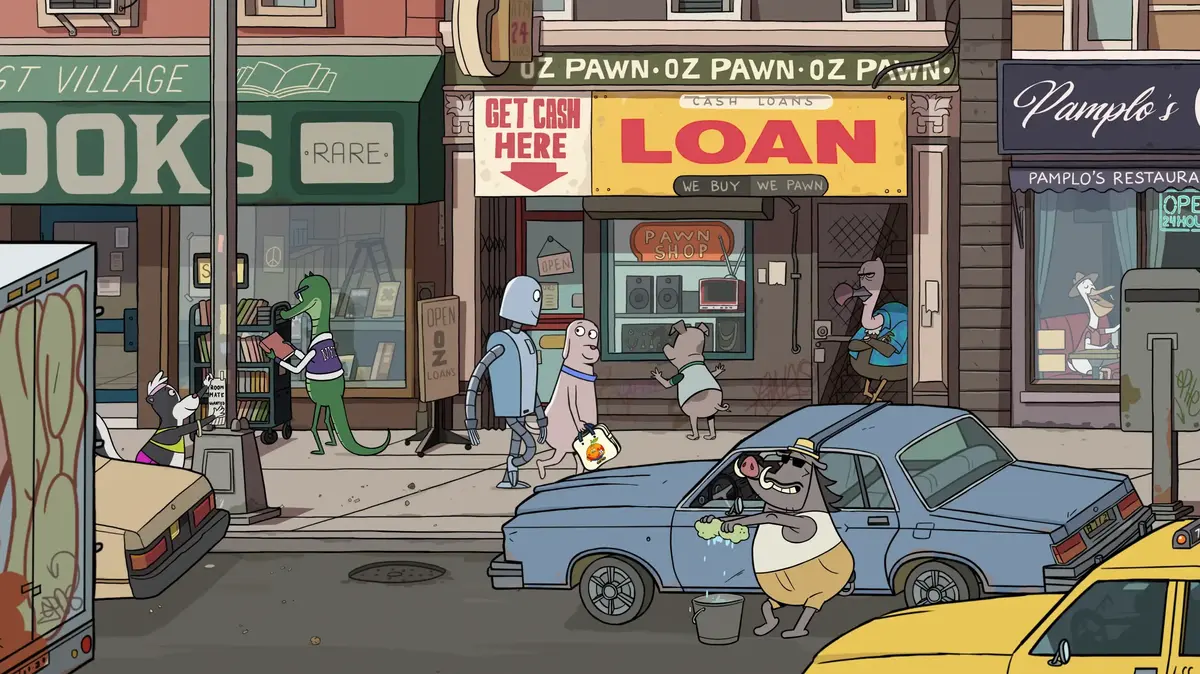In the corridors and galleries another knowing arises.
There the students get intimate, reviewing their notes between classes and asking each other the doubts that they keep silent before the teacher out of modesty.
Perhaps aware of this custom, the architect Miguel Fisac gave informal learning a place in the Institute for Teacher Training, the current Faculty of Statistical Studies of the Complutense University, built in 1954. Some undulating concrete porticos that cross the sculpted complex by the wind and make possible the hypothetical meeting between Andrea and Sebas.
These two first-time students star in
Emotional Architecture 1959,
the latest fiction by Elías León Siminiani (
El caso Alcàsser
,
800 meters
), a half-hour short film shortlisted for the Goyas that explains the Madrid of the dictatorship with a dose of love and urbanism.
The film has just won five awards at the Alcalá de Henares International Film Festival, in addition to the golden spike from Valladolid's Seminci.
It captures a moment in the romance between two young people from different social classes: Andrea is the biological daughter of a National-Catholic man, Sebas comes from a family of workers at the Municipal Transport Company (EMT) that lost the war.
If she can glimpse the Retiro park from her bedroom on Antonio Maura street, he comes face to face with the city's garages, very close to the San Cristóbal neighborhood where she lives.
A little over seven kilometers separate these enclaves, both the work of Secundino Zuazo, who in turn designed the extension of Paseo de La Castellana to unite them.
Houses in the San Cristóbal neighborhood, built next to the Paseo de La Castellana for the workers of the Municipal Transport Company. Jaime Villanueva
Four skyscrapers shadow today the cheap houses of Zuazo, cornered by the growth of the north.
The designer spent a long time in Gran Canaria, ousted for his republican commitment and, back in the capital, tested modern precepts such as cross ventilation, exposed brick and a rectilinear façade in these houses for EMT workers. tiled vaults of the corridors.
In the common areas, around 1948 he planted a swimming pool, sports facilities, green areas and even a church.
Little remains of that proletarian town, which does not prevent Siminiani from intuiting in this territory "traces of life in common."
"The short aims to be a grain of sand in the dissemination of heritage, in awareness regarding the emotional impact of architecture," says the director.
Zuazo had begun to carve out a future as a promoter 25 years before.
The building where Andrea lives was in fact the architect's first business venture, very critical of the general development of the Salamanca district and its ventilation problems.
At the end of the 19th century, Carlos María de Castro had defined the orthogonal blocks of that extension, inside which he left a large free space that private initiative was occupying over the decades.
Defender of the social function of the trade, Zuazo refused to follow that speculative path for his project on Antonio Maura street, endowed with a single house per floor.
He also did not decorate the elevation as other studios did with the aim of placing the most attractive product at the forefront of the real estate market.
Courtyard of the Teacher Training Institute, current Faculty of Statistics of the Complutense University, in 1958.FISAC FOUNDATION
Classroom of the Teacher Training Institute, current Faculty of Statistics of the Complutense University, in 1958. FISAC FOUNDATION
The protagonist of the short film resides in one of those 400-square-meter duplexes that made Zuazo fashionable among the capital's bourgeoisie of the time.
Throughout his career, the architect maintained an internal pulse between tradition and modernity, similar to the one that Andrea wages in relation to Sebas's love.
Siminiani explains: “They have different visions of the world, the result of their origin and experience.
I start from the idea that space can alienate people, segregate them, create inequalities, but also the opposite, as Alain de Botton explains in
The Architecture of Happiness.
Houses have a certain psychology that is contagious and brings people closer.
We can define it as the subtext of the buildings, to use a term that is applied to the characters in the movies.
There we fall in love, we have disagreements, epiphanies, successes, failures or celebrations”.
“I have been wondering for some time how space can be treated in the cinema to make it something more than a backdrop”, adds the director, although it would seem that he already names the architectural fact with his own language, a mixture of audiovisual archive and theater brechtian.
The plot takes place in today's Madrid, with its latest-generation motorcycles and cars, but the audience manages to be transported back to the fifties thanks to the director's own narration, as he already did in
Mapa
(2013) and
Notes for a film by muggings
(2018).
On these foundations he will also build his next film,
Reconstruction,
which focuses on European cities after World War II.
It also delves into the wounds of time, into the eternal conflicts that still mutate, into the simple desire to live a little better.
“I have started to imagine stories based on the configuration of places”, she concedes.
Andrea and Sebas, at a moment in 'Emotional Architecture 1958', by Elias León Siminiani.
The architectural triangulation of Andrea and Sebas has another vertex in the old Teacher Training Institute.
In this teaching acropolis, organized around patios and fountains that are now dry, Fisac made clear an admiration for the Alhambra that, moreover, he shared with Zuazo.
Both retired in 1952 for three days to Granada, where they found, together with another twenty companions, the bases of a new Spanish architecture in the eternity of the Nasrid palace.
Fernando Chueca Goitia would write the group's manifesto the following year, a love letter to the red fortress, while Fisac started work on his new project in the Complutense in the image and likeness of Andalusia.
Years later, in
Letter to my nephews
, the teacher would write: "I had sufficient criteria to judge that the imperialist masquerade that was being built in Spain would not lead us anywhere."
The exposed brick panels and the strict modulation of the hole in the façades of the old institute vibrate with the incidence of light, which is why Siminiani filmed the enclave during the four seasons.
“We did it with the three main buildings in the film, which slowed down production, but allowed us to accompany the emotional fluctuations of the protagonists with changes in the foliage and the buildings, as if they also housed emotions”, says the filmmaker.
The release of his film coincides with an announcement from the Complutense.
The university will reopen the Statistics classroom —where there was a kindergarten closed since 2009 due to the risk of collapse— and will return it to its original use: two fan-shaped classes, just as Fisac projected them at the time.
The performance will amount to about 400,000 euros,
already budgeted in the strategic plan, but Sebas and Andrea deserve no less.
The faculty that brought them together will witness new romances.
Subscribe here
to our daily newsletter about Madrid.
Subscribe to continue reading
Read without limits
Keep reading
I'm already a subscriber








